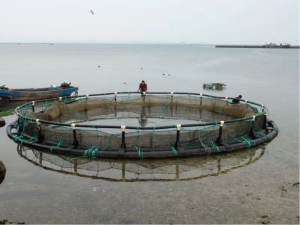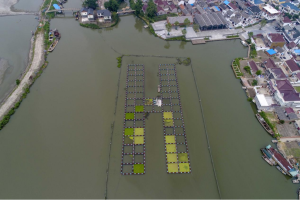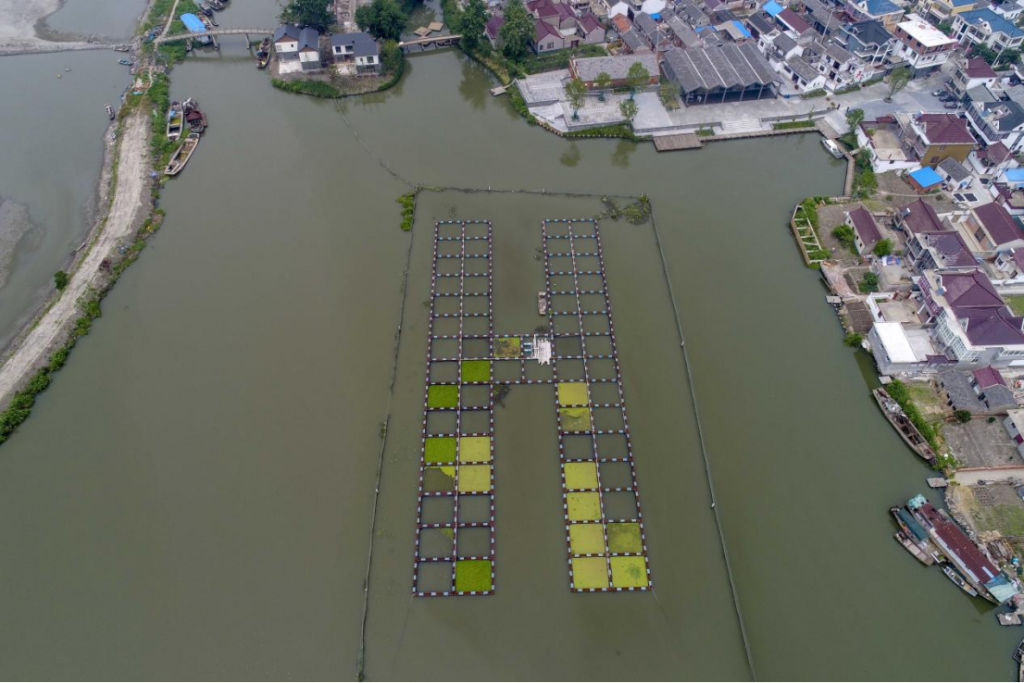In recent years, the challenges confronting mariculture (marine aquaculture) both domestically and internationally are characterized by multi-dimensional and in-depth features, focusing primarily on the following aspects:
- Escalating Pressure on the Ecological Environment
Overloaded development of coastal waters is a core issue common to both domestic and international mariculture. Excessively high aquaculture density in China’s coastal areas has led to eutrophication of water bodies; aquaculture wastewater, residual feed, and drug residues have triggered ecological disasters such as red tides. For instance, the traditional foam float aquaculture in Gouqi Township, Shengsi County, Zhejiang Province once caused severe microplastic pollution, which was only alleviated later through the replacement of environmentally friendly materials. Similarly, shrimp farming in Southeast Asia has damaged biodiversity due to over-exploitation of mangrove wetlands, attracting attention from international environmental organizations.
Ecological risks in offshore and deep-sea areas have become prominent. Although offshore and deep-sea mariculture is regarded as a solution to ease the pressure on coastal waters, the main cultivation of high-trophic-level fish still relies on wild forage fish resources. Moreover, aquaculture facilities may entangle marine protected animals. In Norwegian salmon farming, genetic pollution caused by interbreeding between escaped caged fish and wild populations has become a key regulatory focus in Europe.
Microplastic pollution has emerged as a new threat. Approximately 30% of microplastics in the global ocean originate from aging and damaged aquaculture facilities. A research team in Zhejiang, China, found that the microplastic concentration in mussel farming areas is three times that of natural sea areas; however, pollution control can be achieved through mussel filtration and nanofiltration technologies. Internationally, Maine (USA) is experimenting with replacing plastic floats with mushroom mycelium to explore a “zero-plastic” aquaculture model.

- Technological Bottlenecks Restricting Industrial Upgrading
Inadequate equipment and technology systems. China’s offshore and deep-sea mariculture equipment lacks sufficient wind and wave resistance; for example, steel cages are prone to corrosion and aging, and the coverage rate of disaster insurance is less than 20%. Although the United States has deployed deep-water cages in the Gulf of Mexico, core technologies such as automated feeding and disease monitoring still rely on imports, resulting in aquaculture costs that are 30% higher than those in Norway.
High dependence on external feed resources. Approximately 70% of the fishmeal used in global aquafeed depends on wild catch. For large yellow croaker farming in China, feed costs account for 60% of the total cost; the price of fry feed reaches 13,000 yuan per ton, and the proportion of OEM (original equipment manufacturing) processing exceeds 70%. Internationally, Thailand is developing tilapia varieties with low fishmeal demand through gene-editing technology, aiming to break through resource bottlenecks.
Weak ability to respond to climate change. The average annual sea surface temperature along Turkey’s Mediterranean coast has risen by 0.08°C, prolonging the farming cycle of European sea bass by 15% and reducing feed conversion efficiency by 12%. For rainbow trout farming in northern China, the “land-based and offshore-deep-sea relay” technology has been adopted to utilize the cold water mass in the Yellow Sea for summer survival; however, the equipment investment cost is as high as 500,000 yuan per mu (1 mu ≈ 0.0667 hectares).

III. Urgent Need to Optimize Policies and Management Systems
Gaps in the implementation of domestic policies. Although China has issued the *Notice on Optimizing the Management of Marine Areas for Aquaculture*, the “one-size-fits-all” approach still exists in the clearance of prohibited aquaculture zones in coastal areas. In 2024, the area of illegal aquaculture within ecological red lines still accounted for 12%. The approval of marine areas for offshore and deep-sea aquaculture involves 7 government departments, with an average approval cycle of over 18 months.
Insufficient coordination in international regulation. Although the *Guidelines for Sustainable Aquaculture* released by the United Nations in 2024 proposes an ecological compensation mechanism, there are significant differences in implementation standards among countries. For example, the European Union requires salmon farming to be paired with seaweed farming for carbon sink offset, while Southeast Asian countries have not yet established similar systems.
Intensified conflicts over traditional fishery rights. Due to the demarcation of offshore and deep-sea aquaculture zones, fishermen on Jeju Island, South Korea, have seen their traditional fishing grounds reduced by 30%, leading to multiple protests in 2024. China has guaranteed the livelihoods of 1.5 million fishermen by demarcating traditional aquaculture sea areas for fishermen, but supporting compensation policies have not yet been fully implemented.
- Intertwined Economic and Market Risks
Rising costs and compressed profits. The farming cost of sea bass in China has increased from 15 yuan/kg to 21 yuan/kg, while the market purchase price has only risen by 18%, resulting in a loss rate of small and medium-sized aquaculture households expanding to 40%. Due to rising energy prices, the farming cost of Norwegian salmon increased by 25% year-on-year in 2024, forcing an increase in export prices by 15%.
Escalating international trade barriers. The *Microplastic Ban* implemented by the European Union in 2024 requires imported seafood to provide microplastic testing reports on the aquaculture environment, increasing the export cost of Chinese shellfish by 20%. For tilapia certified through gene-editing technology in Thailand, its export volume only accounts for 60% of the expected amount due to the lack of recognition from Europe and the United States.
- Prominent Social and Ethical Challenges
Public perception and trust crisis. The trust of European consumers in farmed salmon has dropped from 65% in 2019 to 48% in 2024, mainly due to issues such as antibiotic residues and pigment addition. China has promoted the construction of traceability systems through the “Blue Granary” brand initiative, but the market penetration rate is less than 30%.
Labor rights and community conflicts. Shrimp farms in Southeast Asia employ a large number of seasonal workers, with poor working conditions. In 2024, a shrimp farm in Vietnam was forced to suspend production due to a collective poisoning incident among workers. Offshore and deep-sea mariculture in China requires the employment of professional and technical personnel, and labor costs are 40% higher than those in coastal aquaculture, exacerbating the labor shortage.
Global Response Trends
In the face of the above challenges, countries at home and abroad are exploring solutions through technological innovation (e.g., China’s “Shenlan-1” fully submersible cage), model transformation (e.g., the EU-promoted IMTA (Integrated Multi-Trophic Aquaculture)), and policy coordination (e.g., the United Nations’ 2024 Global Roadmap for Sustainable Mariculture). However, achieving sustainable development still requires breaking through the triple constraints of technology, economy, and institutions, and establishing a coordinated “ecology-economy-society” governance framework.
